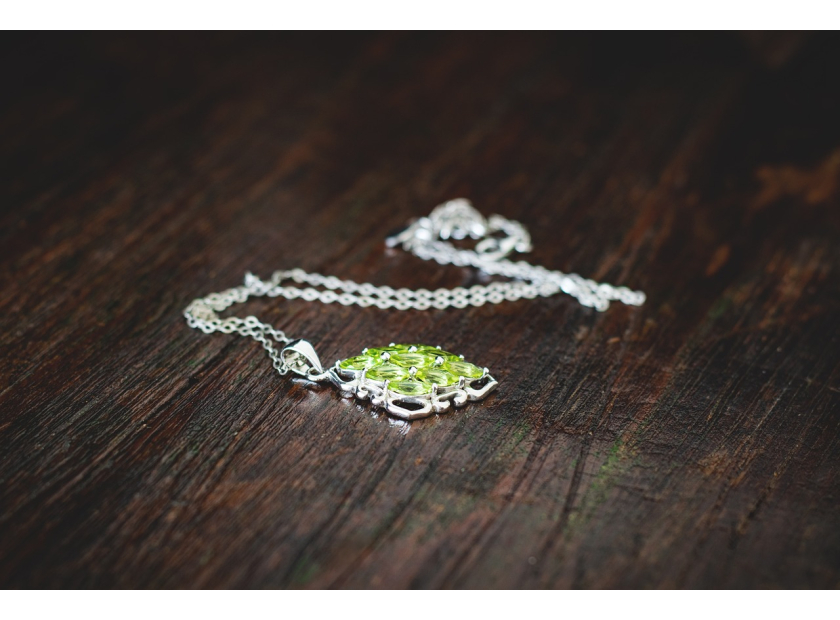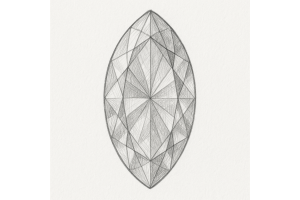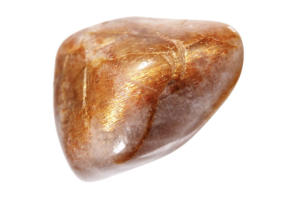GBP
/
GBP
/
Shipping to:
Currency:
How to Identify a Genuine Peridot: Expert Tips for Spotting the Real Gem
Peridot, with its captivating green hue, has enchanted jewellery enthusiasts for centuries.
However, the market is awash with imitations, making it essential to distinguish genuine peridot from fakes.
This guide will walk you through the key characteristics of authentic peridot and offer practical tips to ensure your gemstone is the real deal.
Introduction to Peridot
Peridot is a gemstone that has been cherished since ancient times, often associated with prosperity and good fortune.
Its vibrant green colour makes it a popular choice in various jewellery pieces, from rings to necklaces.
Given its popularity, the market has seen a surge in counterfeit versions, making it crucial for buyers to be equipped with the knowledge to identify genuine peridot.
What is Peridot?
Peridot is the gem-quality variety of the mineral olivine.
It forms deep within the Earth's mantle and is brought to the surface through volcanic activity.
Notably, peridot is one of the few gemstones that occur in only one colour—green.
However, the exact shade can vary from yellowish-green to olive, depending on the iron content within the stone.
Why You Should Learn to Spot a Real Peridot
The gemstone market is rife with synthetic and imitation stones.
Materials like green glass or other green gemstones are often passed off as peridot.
Being able to identify genuine peridot ensures you receive value for your money and helps maintain the integrity of your jewellery collection.
Key Characteristics of a Genuine Peridot
Natural Colour Tones of Peridot
Authentic peridot showcases a vibrant green colour with possible hints of yellow or brown.
The most prized peridots exhibit a pure green hue without secondary tones.
It's essential to observe the stone under various lighting conditions; genuine peridot maintains its colour consistency regardless of the light source.
Clarity and Inclusions
While high-quality peridots are relatively free from visible inclusions, it's common for these gemstones to contain unique characteristics known as "lily pad" inclusions—disk-shaped fractures surrounding a mineral crystal.
The presence of such inclusions can indicate authenticity.
In contrast, imitation stones, especially those made of glass, may contain bubbles or appear flawlessly clear, which is atypical for natural peridot.
Hardness and Durability
Peridot ranks between 6.5 and 7 on the Mohs hardness scale, making it moderately durable but susceptible to scratches from harder materials.
This characteristic means that while peridot is suitable for everyday wear, it requires care to maintain its lustre.
Refractive Index and Double Refraction
A distinctive feature of peridot is its strong double refraction.
When you look closely through the gemstone, especially at its facets, you might notice a doubling effect.
This optical property can be a telltale sign of genuine peridot.
Common Peridot Imitations and How to Spot Them
Green Glass
Green glass is a prevalent peridot imitator.
Unlike genuine peridot, glass often contains tiny bubbles and lacks the double refraction characteristic.
Additionally, glass imitations might exhibit a "misty" appearance, especially over time.
Synthetic Peridot
Lab-created peridots are rare but do exist.
These synthetics mimic the chemical composition of natural peridot but typically lack natural inclusions.
Advanced gemological equipment is often required to distinguish between natural and synthetic peridot accurately.
Other Green Gemstones Mistaken for Peridot
Gemstones like emerald, green tourmaline, and chrysoberyl can resemble peridot.
However, differences in hardness, refractive index, and specific gravity can help differentiate them.
For instance, emeralds are generally harder and have a different refractive index compared to peridot.
Simple At-Home Tests to Check Authenticity
- Visual Inspection: Examine the stone under good lighting. Look for the "lily pad" inclusions and check for colour consistency.
- Magnification Test: Using a jeweller's loupe, inspect the gemstone for inclusions typical of peridot. The presence of "lily pad" inclusions can be a positive sign.
- Scratch Test: Given peridot's hardness, it shouldn't scratch easily. However, this test can damage the stone and is not recommended without professional guidance.
- Light Test: Observe the stone under different light sources. Genuine peridot maintains its colour across various lighting conditions.
- Magnet Test: Due to its iron content, peridot may exhibit a weak magnetic response. Placing the stone on a piece of Styrofoam in water and bringing a strong magnet close can sometimes cause movement, indicating authenticity.
When to Consult a Professional
If you're uncertain about your peridot's authenticity, it's wise to consult a certified gemologist.
They can provide a comprehensive analysis using advanced equipment and may offer certification to validate the gemstone's authenticity.
Buying Tips for Authentic Peridot
- Purchase from Reputable Dealers: Always buy from trusted jewellers or dealers with positive reviews and a solid reputation.
- Request Certification: Ask for a certificate of authenticity, especially for high-value purchases.
- Be Wary of Deals Too Good to Be True: Extremely low prices can be a red flag for counterfeit stones.
For those interested in exploring a variety of gemstone jewellery, check out gemstone rings for a selection of beautiful and vibrant designs.
You might also want to explore gemstone engagement rings if you're looking for something timeless yet unique.
And if you're still choosing between options, this comparison of lab-grown diamonds vs gemstones offers helpful insights.
Frequently Asked Questions
How can I tell if a peridot is real at home?
You can start by checking its colour, inclusions, and refractive properties. Use a loupe to look for "lily pad" inclusions, and observe the gemstone under multiple lighting conditions to confirm colour consistency.
Is peridot magnetic?
Due to its iron content, peridot may show a weak magnetic response, though this test is subtle and not conclusive on its own.
Do real peridots have bubbles inside?
No. Bubbles are typically found in glass imitations, not in natural peridot. Inclusions in genuine peridot often resemble tiny disks or lily pads.
Can a real peridot scratch?
While relatively durable, peridot can still scratch if it comes into contact with harder substances. It ranks 6.5–7 on the Mohs scale.
Should I get my peridot certified?
Yes, especially for larger or more expensive stones. Certification from a reputable gem lab provides peace of mind and confirms the stone’s authenticity.








